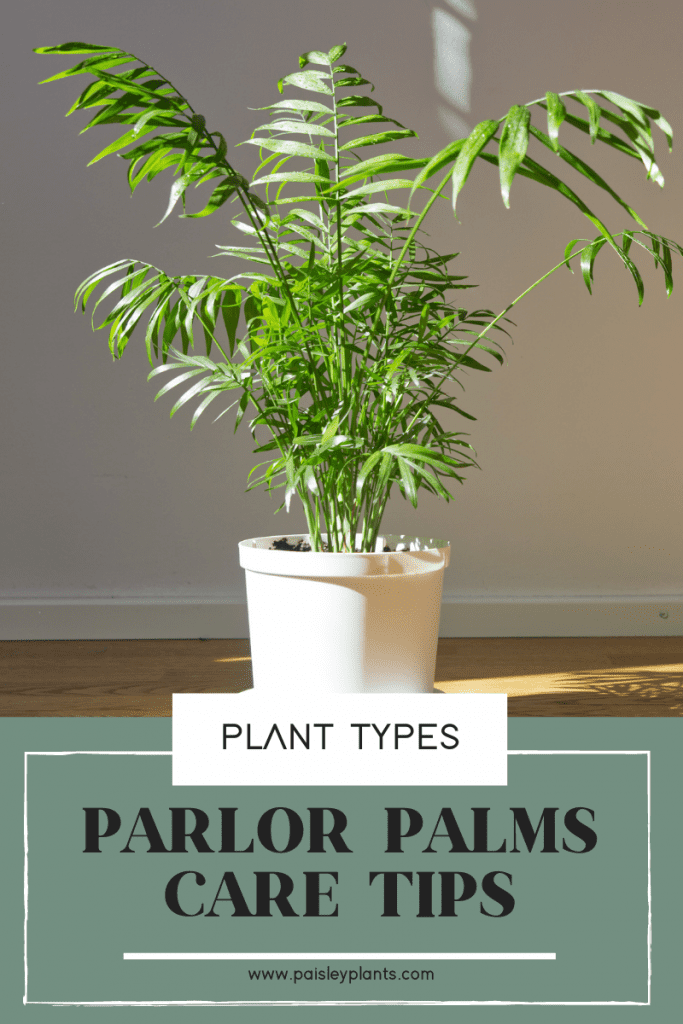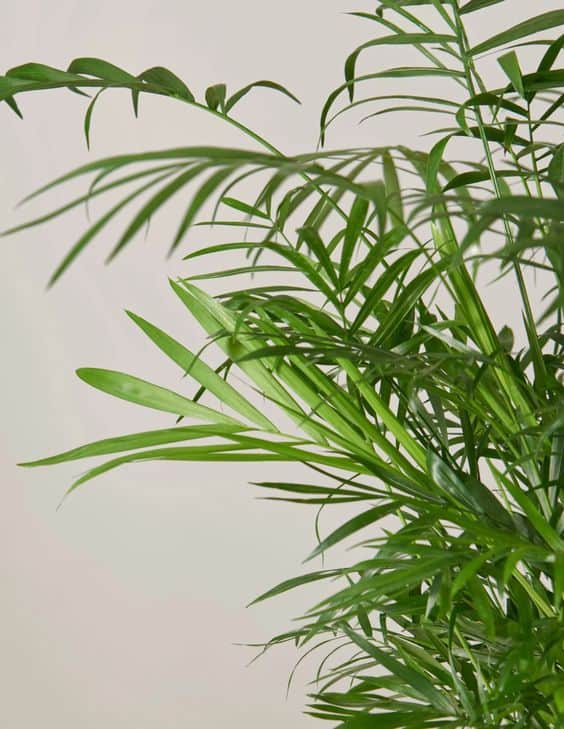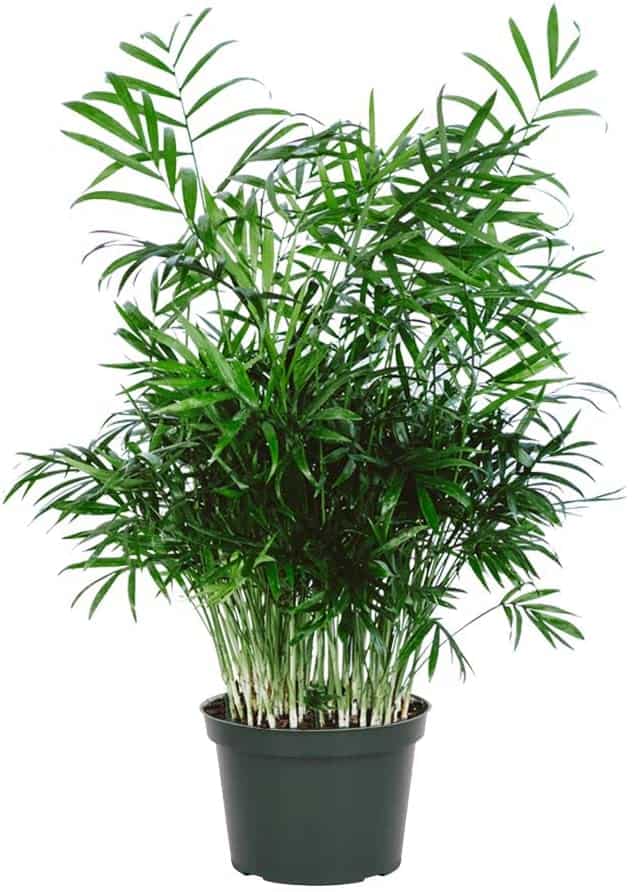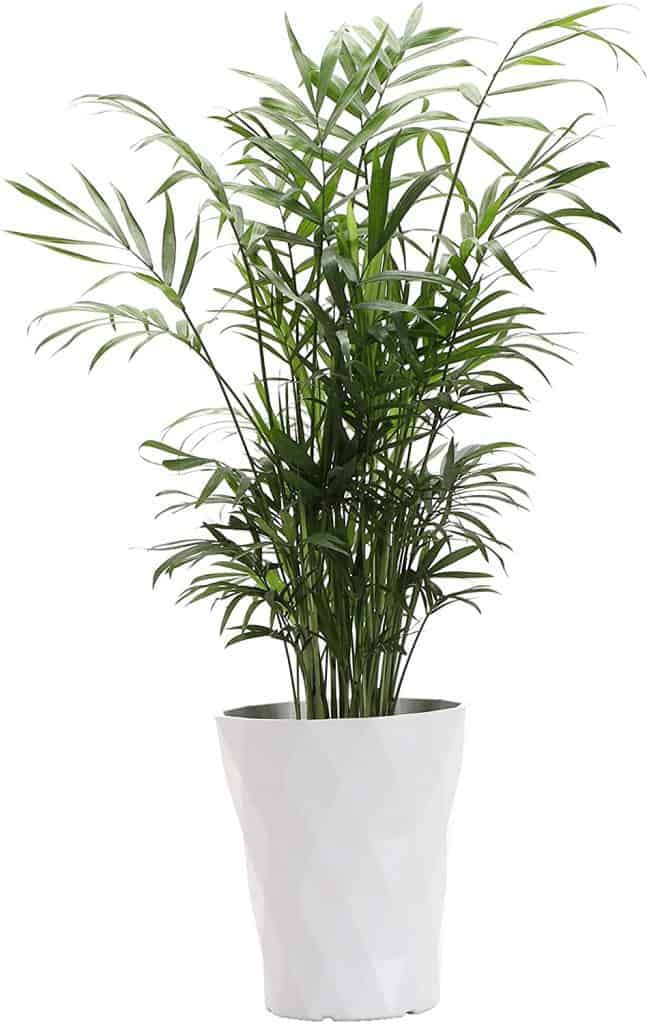Parlor palms, also known by their botanical name Chamaedorea elegans, are beautiful indoor plants that are common in the United States. They are also known as the Neanthe Bella Palm.
Native to subtropical and tropical areas of the Americas, this plant truly is one of the safest plants you can have in your home. They are known for being non-toxic, but they are also sensitive to certain conditions.
Let’s dive into some of the details on care, its history, and whether or not the parlor palm plant is a good idea for your home.

This post includes affiliate links.
Table of Contents
History & Background
Parlor palms were originally found in Central America, but people brought the plant to the United States. These plants are native to the rainforests of Southern Mexico and Guatemala, so they love high humidity levels and rain!
They are part of the palm family, as noted by their name, and they are great for indoors. In their natural habitat, the parlor palm can grow from 6 feet up to a full height of 16 feet tall. If they are in indoor conditions, they only grow about 2 to 6 feet tall — still very big for an indoor plant!
Their blooming occurs in the spring, but you’d be lucky to see this happen if your plant is indoors. For those who live in warmer climates, you can put this plant outside and watch it thrive and bloom during this time. The flowers will be a beautiful yellow color.

Image via the Sill
Unfortunately, the “loved to death” problem can be an issue for parlor palm owners. This means you have to be careful about how much water and how much light it receives.
These plants are sensitive and thrive best with northern exposure or being placed within a foyer. These palms love the spotlight, but they have to be managed to help them stay alive for many years.
Varieties of Parlor Palms
There are three main types of parlor palm houseplants. Here’s how they differ from one another.
C. elegans
This is the most popular species, and it is native to Mexico and Central America. It is most commonly used in dish gardens and is the main species that we are discussing today.
C. erumpens
Originating from farther south than the previous species, this plant is a lot larger. It has larger fan-like leaves, but still captures that similar bamboo appearance that the parlor palms are known for.
C. hooperiana
This variety is newer than the other plants, but still just as lovely. It resembles a kentia palm because of the large palm-shaped leaves. It is easy to grow and great for beginners looking for a beautiful plant to start with.
Parlor Palm Care
Here are some tips for parlor palm care and for keeping this popular house plant healthy.

Image via the Sill
Light
The parlor palm thrives in bright indirect light. This is because of their native habitat being the rainforest where they don’t get much direct sunlight.
Additionally, they can tolerate low light that is indirect. Intense, direct sunlight will hurt this little palm, so be careful about where you place it in your home or garden.
Watering
Because of this plant’s strength, it only needs to be watered every one to two weeks. This is to allow the soil to dry out between the watering sessions.

Image via Amazon
Overwatering and underwatering this plant will result in damage to the plant, so pay attention to the amount of water this plant needs. Always check for moist soil before you add more water.
In bright light and in the summer months, you should expect to be watering your palm more. This will also be the opposite in less light, where you won’t have to water as much.
Soil
This plant can be kept as an outdoor plant or an indoor plant, but it will require different soil depending on where you keep it. Outdoor parlor palms will need a soil mix with good drainage to get rid of excess water.
Parlor palms kept indoors should use a different soil, preferably one that is a soil-based potting mix. This will help keep it adequately moist. The soil’s pH should be between acidic to neutral to keep the parlor palm in good condition.
Fertilizer
Generally, this plant responds best to weak liquid fertilizer. This should only be implemented once or twice during its growing season in the warmer months.
In the winter, it should not be fertilized. The plant doesn’t need that much feed to keep healthy during the colder seasons.
Temperature and Humidity
With its subtropical and tropical origins, this plant needs a warmer environment. It is part of what makes parlor palms popular houseplants! The best temperature is between 65 and 80 degrees Fahrenheit. It can withstand low temperatures down to 50 degrees, but if frost touches this plant, it will not survive.

Image via Amazon
Average humidity is enough for the plant to thrive as well. This means those in dryer climates might need to provide additional misting and spraying if the plant appears too dry.
You can usually tell when the palm needs more moisture because it will have dry spots or leaves or brown leaf tips. The best way to fix this is by raising the humidity, and then watering the plant.
Propagation
Propagating your parlor palm is difficult, and unfortunately, you should always seek someone who has experience in this area. If you are able to divide the clump into two smaller clumps, you might be able to do it on your own. However, because of the way they are often grown, they end up being difficult to separate.
It is impossible to propagate by leaf or stem cutting. It is better to just buy a new plant. Otherwise, you risk hurting your existing plant beyond repair.
Potting and Repotting
Unfortunately, as easy as these plants are to take care of, they are also really weak rooted. They are slow growers, and the repotting has to be done carefully to ensure you have a healthy plant after the repotting is done.
The plants are usually manageable, so you won’t necessarily be required to repot your plant. Part of this is due to the fact that these plants’ new growth is extremely slow.
The only time you must repot your plant is when your soil becomes too mucky or sponge-like. If you don’t, you could risk root rot and other challenges that you don’t want to face in the future.
For potting, you also should make sure that you use a 3-gallon pot. These are about 10 inches wide and enough space for your plant to grow.
Diseases and Pests
These palms are beautiful and easy to care for, but they also struggle against some common pests. Some of the most notable include aphids, mealy bugs, scale insects, and whitefly.
These are easy to detect in your plant, and if you find it early, you can save your plant. When you do treat your plant, opt for the least toxic option because of this plant’s sensitivity.
These palms also are susceptible to moisture problems such as fungal leaf spots and root rot. These can damage the plant significantly, cause injury to your plant, and force you to either repair the plant fast or start over with a new palm in your home.
Toxicity
Luckily, these palms are non-toxic. These are great to have in homes with children or pets. You don’t have to worry about your loved ones around your beloved palm in your home.
For this reason, they can be great plants to keep indoors and the safest out of some of the palms.
Benefits
One of the last considerations to mention is the great air-purifying qualities that this plant has. Despite its fickle nature with overwatering and direct sunlight, this plant truly does provide great benefits for those looking to have a cleaner space in their homes. Adding this into your home will clean your air over time.
Conclusion
Parlor palms are attractive houseplants, but you will have to take great care of them. The beginner plant owner can own these, but be mindful of the challenges that this palm faces as it grows to its mature height.
If you’re ready to provide the right care, the parlor palm could be the perfect plant for you.
Check out other posts here!

